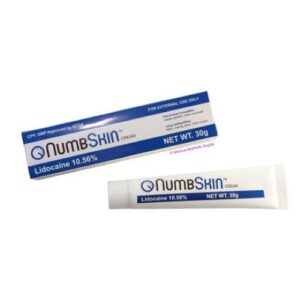Dialysis is a necessary and life-saving treatment for individuals with kidney failure. However, it can also be a painful and uncomfortable experience. The repeated insertion of needles and the prolonged duration of the treatment can cause discomfort and anxiety for patients. Because dialysis treatment is long-term treatment, a lengthy process, and a fear of pain, it is essential to explore numbing techniques for dialysis to make the experience more comfortable for patients.
In this article, we will talk about how to make dialysis less painful for patients.
Why is Numbing Important for Dialysis?
 Dialysis involves inserting needles into the patient’s arm or leg to access the blood vessels, which remove and filter waste products from the body. The process can be painful and uncomfortable, especially for patients who have been undergoing dialysis for a long time.
Dialysis involves inserting needles into the patient’s arm or leg to access the blood vessels, which remove and filter waste products from the body. The process can be painful and uncomfortable, especially for patients who have been undergoing dialysis for a long time.
Inserting needles multiple times can leave scars and harm blood vessels, making it harder to use them later on. Because dialysis is a painful, lengthy process, it is vital to use numbing techniques to reduce the pain and discomfort associated with dialysis.
Is Dialysis Painful?
Comfort Measures During Dialysis
Healthcare providers and patients can take several comfort measures to make the experience more comfortable for patients during dialysis. These include:
- Warm blankets or heating pads can keep the patient warm and comfortable during the treatment.
- Providing distractions such as music, movies, or books to help patients relax and take their minds off the treatment.
- Allowing patients to have a support person with them during the treatment to provide emotional support and comfort.
- Encouraging patients to communicate their needs and concerns to the healthcare team during the treatment.
These comfort measures can make patients feel better during dialysis. However, they don’t help with the pain and discomfort from needle insertions.
Pain Management During Dialysis
Pain management is an essential aspect of dialysis treatment that helps patients feel better during treatment and lowers the chances of infection and blood vessel damage.
Some common pain management techniques used during dialysis include:
- Topical anesthetics are creams or gels applied to the skin before needle insertion. They work by numbing the skin and reducing the pain associated with needle insertion.
Local anesthetics of the skin to reduce pain are injected near the needle site.
- Systemic pain medication: These medications are taken orally or intravenously to reduce pain and discomfort during dialysis.
While these pain management techniques can be effective, they may not suit all patients. Some patients may have allergies or sensitivities to certain medications, and others may not want to take additional medication. This is where numbing techniques designed explicitly for dialysis can be beneficial.
Using Numbing Creams for Dialysis
Several dialysis numbing techniques have been developed specifically for dialysis. These techniques are safe and effective and can be used with other comfort measures and pain management techniques. Let’s take a closer look at some of these techniques.
Lidocaine 10 Cream
Lidocaine 10 cream is a topical anesthetic commonly used for numbing during dialysis. It is applied to the skin before the needles are inserted, blocking the nerve signals transmitting pain. Lidocaine 10 cream is easy to use and can provide effective numbing for up to an hour. It is also safe for most patients and has minimal side effects.
NumbSkin 10.56% Lidocaine Numbing Cream
NumbSkin 10.56% Lidocaine Numbing Cream comes in a 30g tube. It is also known as NumbSkin 10.56%, NumbSkin Blue, or just NumbSkin. This cream has 10% lidocaine, which helps numb the skin. NumbSkin 10.56% has proven an effective and painless solution for numbing various procedures.
NeuroMed BLT Numbing Cream, 10g

NeuroMed BLT Numbing Cream is a topical anesthetic cream or gel that combines three active ingredients: Benzocaine, Lidocaine, and Tetracaine. BLT numbing cream works together as the strongest numbing cream to numb the skin and underlying tissues. NeuroMed BLT Cream is a professional numbing cream for microneedling and is commonly used before tattooing, laser hair removal, minor surgical procedures, and other medical or aesthetic treatments involving pain or discomfort.
Ethyl Chloride Spray
Ethyl chloride spray is a fast-acting topical anesthetic commonly used for numbing during dialysis. It is sprayed onto the skin before the needles are inserted, cooling the skin and numbing the area. Ethyl chloride spray is easy to apply and provides quick numbing for up to 30 seconds. It is also safe for most patients and has minimal side effects.
How to Use Numbing Techniques for Dialysis
Patients and healthcare providers can use numbing techniques during dialysis, which should utilized in conjunction with other comfort measures and pain management techniques. Here are some tips for using numbing techniques during dialysis:
- Please consult with the healthcare team: Consult with the healthcare team to ensure they are safe and appropriate for the patient.
- Follow instructions carefully: Make sure to follow the instructions for the numbing technique carefully to ensure its effectiveness and safety.
- Apply the numbing technique before the treatment: To allow enough time for the techniques to take effect, they should be applied at least 30 minutes before the start of the treatment.
Communicate with the healthcare team: If the numbing technique is not providing enough relief, communicate this with the healthcare team so they can provide additional pain management techniques.
Conclusion
Dialysis is a necessary and life-saving treatment, but it can also be a painful and uncomfortable experience for patients. Numbing techniques for dialysis can help reduce the pain and discomfort associated with the treatment, making it a more comfortable experience for patients.
Patients can improve their dialysis experience using these techniques, other comfort measures, and pain management methods. Combining comfort measures and pain management can reduce stress, making the experience more positive.
Talk to your healthcare team about the best way to numb the pain during dialysis and make your treatment more comfortable. Using Lidocaine Products Safely




